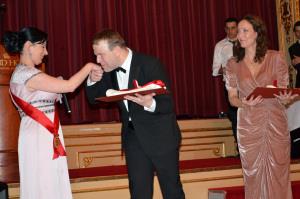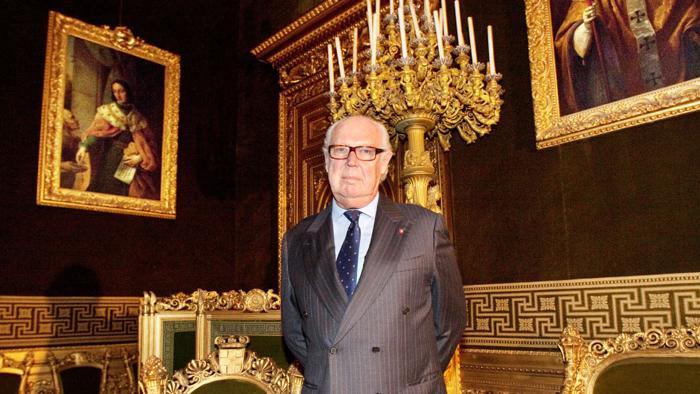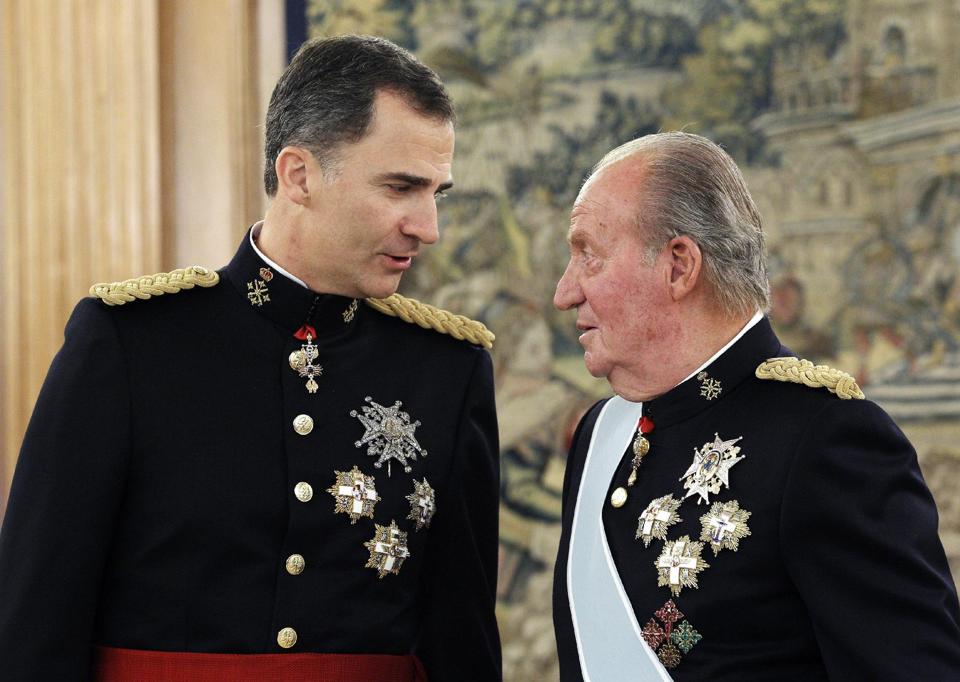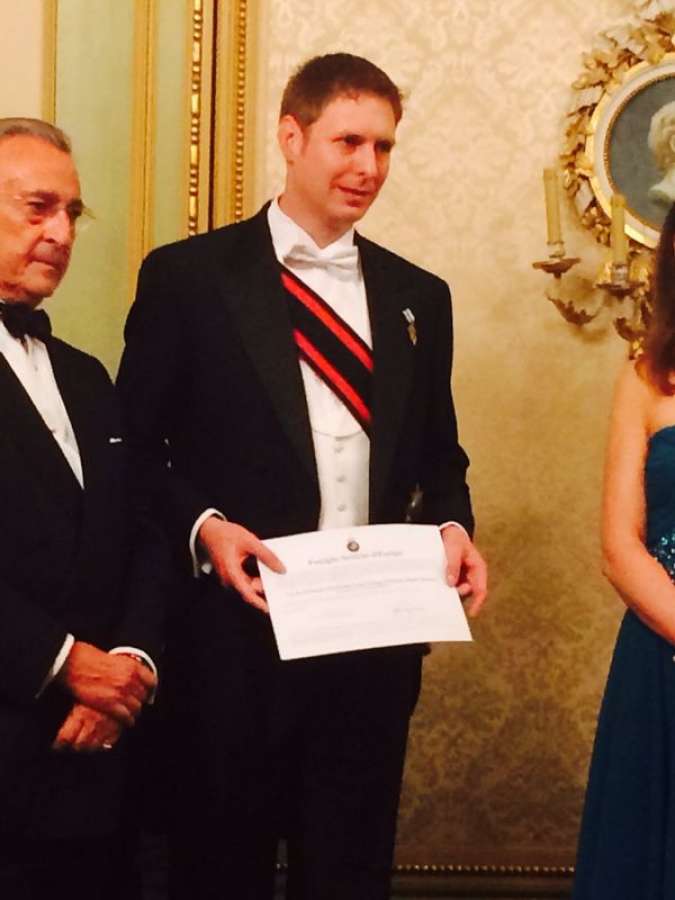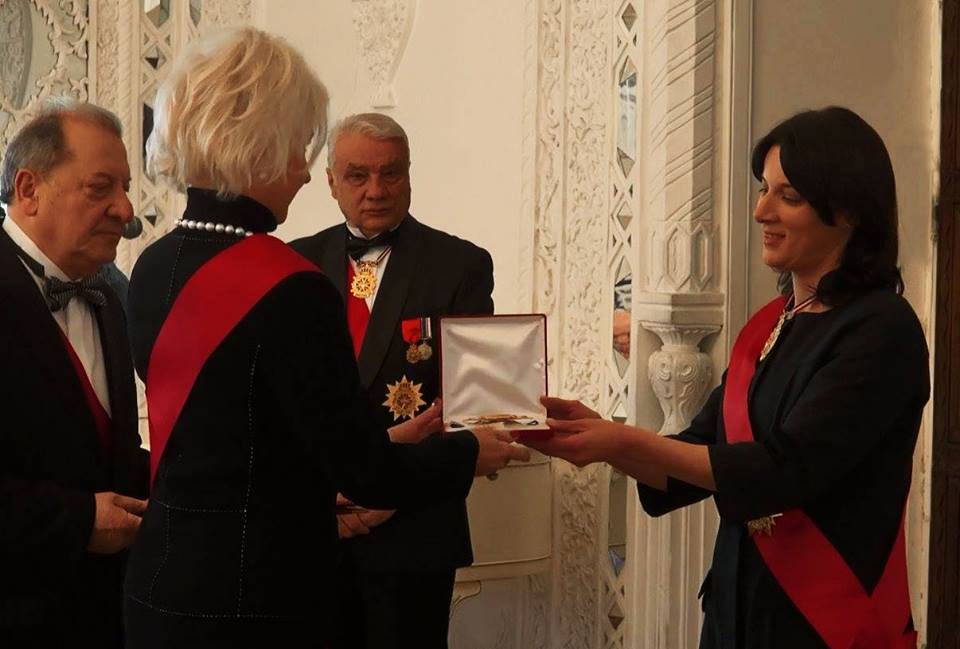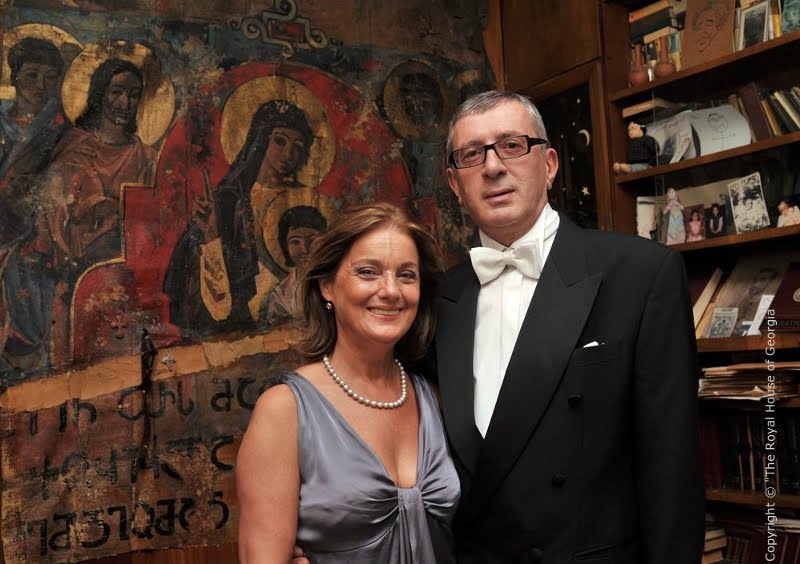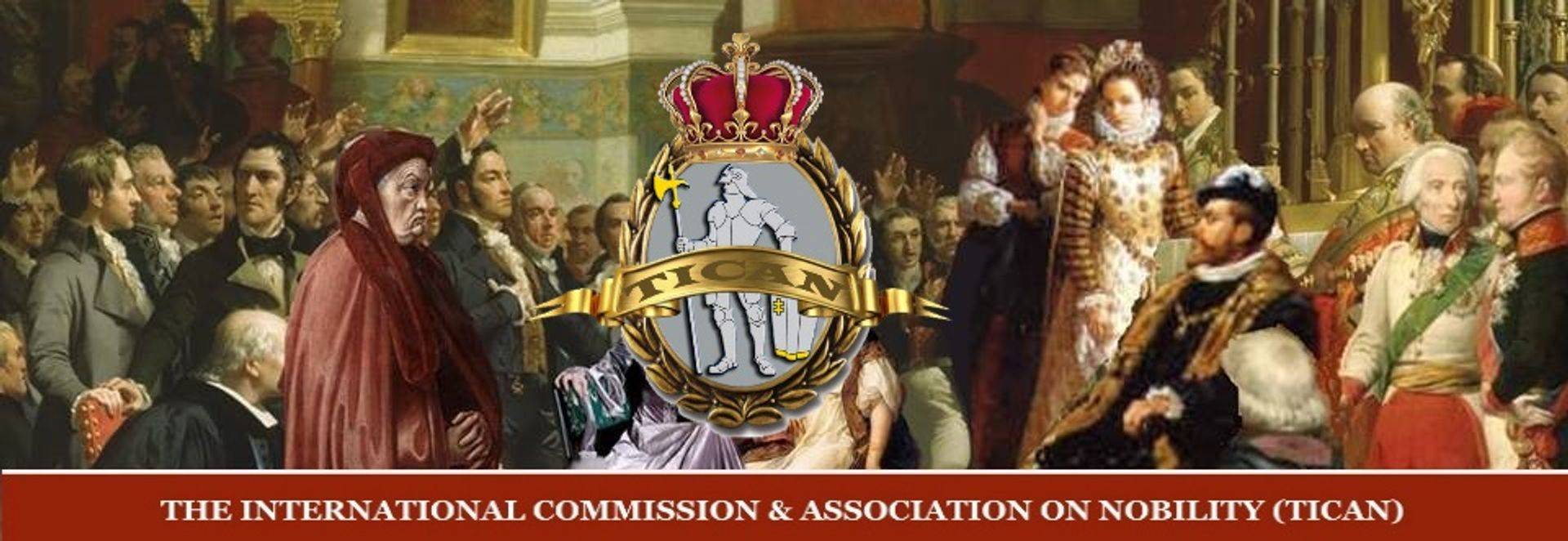
Title

WHAT IS HERALDRY?
Heraldry is the practice of displaying a personal coat of arms to identify oneself. Heraldry is the art designing, recording, displaying, granting and describing coats of arms. During the 12th century, simple coats of arms were being passed down to children throughout Europe. Heraldry came into practice by the end of that century. Heraldic tradition differs from country to country. In Britain, coats of arms belonged to an individual rather than a family and were legally granted from father to son. As they were used for legal documents and identification, their use was austerely controlled. Therefore, a strict protocol for creating coats of arms, including what symbols and colors could be used was practiced by practitioners of heraldry.

The word "heraldry" is based on the Germanic word "harja-waldaz," which means "army commander." It means the person who announce an advancing army, or could identify its main components, for example its knights, their method of fighting, and particularly their recod of success in the field, all very important things for a commander before taking the risky decision to commence battle.
Heraldry is the practice of displaying a personal coat of arms to identify oneself. At its height in the Medieval period in Europe, noblemen and knights placed heraldry on their armor, shields, banners and other property. The origin of heraldry is not clear, and its original purpose is disputed by historians.
The earliest known example of a Norman type Heraldic shield was found on a tombstone in the Alsace region of France, it is dated 1010AD.
Heraldry as we know it spread across Europe from Germany, and was brought to England by the Normans in 1066, eventually finding its way to Ireland shortly after. The early Norman/English Coats-of-Arms originally carried fairly simple geometric designs, and later came images of Lions, Stags, Castles and Weaponry.
During the time of the Medieval Era, the practice of bearing personal symbols, colors and designs upon the shields came into play. This was a means to distinguish individual soldier and to which army they belonged to; thus, avoiding the killing of your own fellow soldiers. By the 14th century, the practice was furthered by embroidering the personal insignia on the surcoat which was worn over the suit of armor – this is where the term “Coat of Arms” originated.
Today, the descendants of a particular surname most often adopts the Coat of Arms of their ancestral surnames, primarily the oldest and first registered. Some authorities say this practice is wrong, but some concluded that assuming the family surname and bearing of it over many generations is the same principle and practice as assuming and bearing a family surname Coat of Arms, and thus justifies it.
Heraldry is the art designing, recording, displaying, granting and describing coats of arms. During the 12th century, simple coats of arms were being passed down to children throughout Europe. Heraldry came into practice by the end of that century. Heraldic tradition differs from country to country. In Britain, coats of arms belonged to an individual rather than a family and were legally granted from father to son. As they were used for legal documents and identification, their use was austerely controlled. Therefore, a strict protocol for creating coats of arms, including what symbols and colors could be used was practiced by practitioners of heraldry.
BACKGROUND

(serekh emblem of Pharaoh Raneb, whose name appears between the falcon and the palace symbols)
Emblems, called serekhs, were used in ancient Egypt, indicating the reach of a certain regime. These were sometimes attached to goods for trading. Ancient warriors customarily painted their shields with symbols and mythological motifs; these were used as identifying marks. The Roman army made use of similar markings for identification purposes, as well. Although these were not heraldic emblems, they could be considered a forerunner of coats of arms which appeared in the Middle Ages.
Ancient peoples, from the Babylonians to the Vikings, carved symbols into the prows of ships to identify the owners. Symbols carved in wood or stone or inscribed on hides, marked ownership for Native American tribes, Asian warlords and African headmen. In Europe the people of many lands used symbols or crests for family identification, even in nomadic times.
The earliest documented use of a coat of arms on a shield is the crest of Geoffrey Plantagenet, Count of Anjou, in 1127. He received his heraldic device from King Henry I of England, who was his father-in-law. According to the Oxford Guide to Heraldry, Plantagenet's crest was an azure shield with four gold lions rampant.
Heraldic crests may have identified knights in full armor to one another during battle, but typically crests were more about status and personal vanity. The practice of bearing heraldic symbols on shields and banners became more popular with the rise of knights' tournaments, and by 1400, competitors had to have the proper heraldic symbols to participate in such an event. When jousting tourneys died out, coats of arms remained in use as seals for documents, carvings on gates and family tombs, or as banners flown outside homes.
With the suppression of private armies, and the gradual disappearance in the 16th century of both tournaments and closed helmets, the sporting and military uses of heraldry became less important and it became rather a decorative art. Coats of arms were carved over doorways, woven on tapestries, placed in stained glass windows and engraved on silver.
Many heralds attempted to "collect" as many arms for their published works as they could, an arduous task obviously limited by the inability to travel or communicate over vast regions. In addition, through the ages, vast numbers of heraldic records have been lost and many legitimate coats of arms cannot be found in reference books of today.
MODERN HERALDRY

The Parts of a Coat of Arms
A real coat of arms is divided into several parts. Each part tells you something about the individual, family, corporation, or organization to which it was granted. The parts of a coat of arms are:
- The Motto: This is the motto of the person or entity who owns the arms. It can be anything they want to say that they feel represents them and/or their group or family. The motto may or may not be placed on a design of some sort, and it is located at the very top of the arms.
- The Crest: Located directly under the motto, this is a three-dimensional symbol of some kind that identifies an achievement of the owner of the arms.
- The Shield Elements: Since arms were originally painted on shields, the shield is now a basic part of any coat of arms. It is a miniature representation of what the original shield looked like (or would have looked like if the person or entity who was granted the arms ever went into battle). There may be several different designs on the shield, and their placement and colors tell a story about the origin of the arms.
- Supporters: These are usually two animals or people that stand on either side of the shield, supporting it. The animals or people used as supporters also tell part of the story of the origin of the arms.
Today Heraldry can be seen in civic flags, and the regimental plates on every army vehicle, as well on government buildings and institutions. It can also be seen in the multi-colored jerseys of players on sports field, and at a horse race, where jockeys wear colored and patterned vests so they can be identified from a great distance, as was their original purpose. When most people think of Heraldry they think of Richard the Lion Heart riding into battle dressed in full Heraldic regalia, with a richly decorated shield and sur-coat. But the origins of heraldry lie far back in the misty world of the middle ages, and their story is rich interweave of tapestry, with each stitch representing a colorful strand of European history.
Many heraldic societies exist around the globe. People view heraldry as part of their heritage and as a way to show pride in their origins. Nations, provinces, states, counties and cities continue to add to the traditions of civic heraldry.
Heraldry continues to flourish in the modern world. Institutions, companies, and individuals continue to use coats of arms as forms of pictorial identification. In the British Isles, the Kings of Arms and the Chief Herald of Ireland continue to make grants of arms. There are also heraldic authorities in Spain, Canada and South Africa that grant or register coats of arms. Heraldic societies abound in the world today in Africa, Asia, Australia, the Americas, and in Europe.
Some people who have interests in heraldry as a hobby participate in the Society for Creative Anachronism and other medieval revivals or in micro nationalism. Many more people see heraldry as a part of their national, and even personal, heritage, as well as a manifestation of civic and national pride.
Today, heraldry has ceased to be an expression of aristocracy throughout the world and is simply a form of identification. Military heraldry continues to develop, incorporating blazons unknown to the medieval world. Nations and their subdivisions, provinces, states, counties, cities, and more continue to build on traditions of civic heraldry. The Roman Catholic Church, the Church of England, and other faiths maintain a tradition of heraldry known as ecclesiastical heraldry for its highest ranking prelates, holy orders, universities and schools.
Most universities and other educational institutions have a coat of arms that can be seen on its diplomas and letterhead to coffee mugs and sweatshirts.
How to register a coat of arms.
We at International Commission and Association on Nobility (TICAN) do not undertake the registration of coats of arms with heraldic authorities, mainly because most of these bodies will not accept third party applications.
Registering a new Coat of Arms
Actually, there is no persuasive reason to register your coat of arms. A registered coat of arms has no real legal protection. If you request a new coat of arms design from an artist, then, on creation, the design becomes intellectual property and is subject to copyright protection. Assuming you have full rights of use from the artist, then your coat of arms is copyright protected.
What to register.
In designing a new coat of arms, it should always try to stay within the "rules" or heraldry, left to the heraldry competent. However, it often happens that the customer will require some symbols or color scheme that breaks those rules. Be aware that if you plan to register your arms with a heraldic authority, they may reject designs that coerce with the rules.
THE HISTORY AND ORIGIN OF FAMILY MOTTO
"Malo Mori Quam Foedari" (I rather die than live in disgrace)
The Family´s or individual´s Motto had originated around this time, and coming from the distinct "Battle cry" of an individual, it consisted of a favorite saying, or heart-felt statement that gave the individual added mental courage going into battle. These too are unique and not two are shared, and were thus adorned upon the Coat of Arms usually reordered in Latin. Not every bearer of Coat of Arms has a Motto, or a crest. Today Mottos are most often found as corporate Motto or advertisement slogans.
ABOUT THE FAMILY COAT OF ARMS
Some family historians appropriate for themselves (or their ancestors) coats of arms or aristocratic lineages drawn from references discovered from public libraries. The researcher probably shares no more than a surname with the famous family whose history he has claimed. Thousands of ordinary families coincidentally bear such famous surnames as Medici, Este, Grimaldi, Visconti, and Savoia, having no kinship whatsoever to the ancient dynasties which also bear these names.
Nothing stops you from designing your own coat of arms and/or family crest. Just know that it is not a hereditary one and has no official or ancestral meaning. You can make one for yourself or your family and use it as a logo. Many companies online will help you design your own. It is the companies that sell you what they tell you is your official family coat of arms based on your surname that are not to be trusted.
ONOMATOLOGY
HERALDRY WEBSITES:
Heraldry In America
Heraldica--American Heraldry Page
The American College of Heraldry
Civic Heraldry in the United States
United States Air Force--Guide to Heraldry
United States Army--The Institute of Heraldry
The College of Arms Foundation
The Augustan Society, Inc.
New England Historic Genealogical Society Committee on Heraldry
The U.S Heraldic Registry
Foreign Private Heraldic Registries
Russian College of Heraldry
"Der Herold" Association for Heraldry, Genealogy and Related Sciences, Berlin (in German)
"Zum Kleeblatt" Heraldry Association, Hannover, Germany (in German)
"Der Wappen-Löwe" Heraldry Society, Munich (in German)
Westphalian Heraldry Society, Bochum, Germany (in English)
Scandinavian Roll of Arms (in Swedish)
French Heraldry Council (in French)
Central Bureau for Genealogy (Netherlands) (in Dutch, with some pages available in English)
Corps of the Cronistas King of Arms of Spain (some in English)
"White Eagle" Serbian Heraldry Society (in English)
Suomen Heraldinen Seura
Foreign Heraldic Societies
Heraldry Australia
The Birmingham and Midland Society for Genealogy and Heraldry
The Heraldry Society of Finland
The Heraldry Society (England)
The Heraldry Society of Scotland
The Norfolk Heraldry Society
The Russian Heraldry Society
The Royal Heraldry Society of Canada
The Scandinavian Heraldry Society
The Yorkshire Heraldry Society
The Heraldry Society of Sweden
Society of Heraldic Arts
International Association of Amateur Heralds
Foreign Heraldic Authorities
The College of Arms (England)
The Court of the Lord Lyon
The Canadian Heraldic Authority
The Chief Herald of Ireland
The South African Bureau of Heraldry

